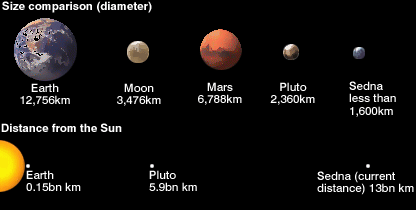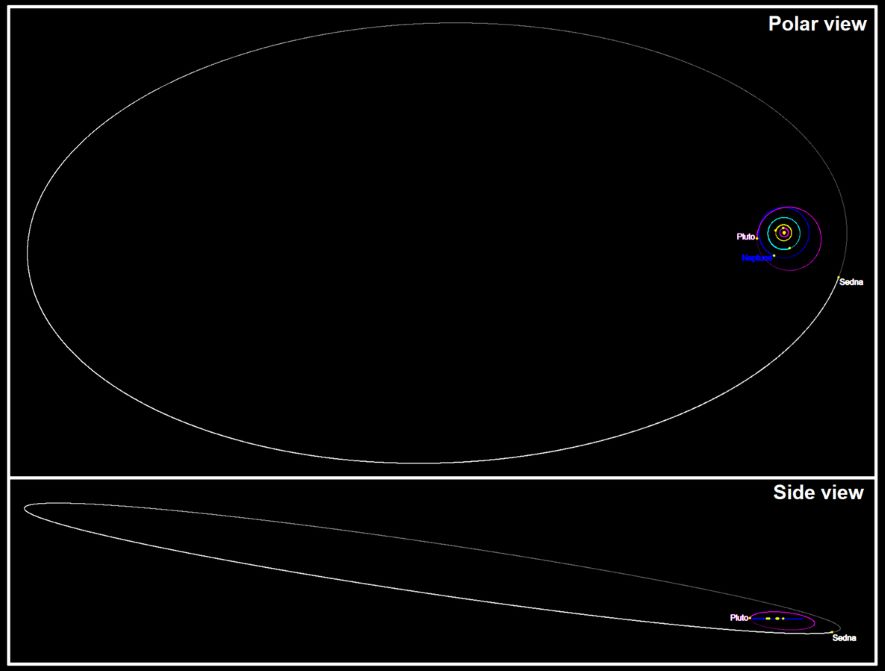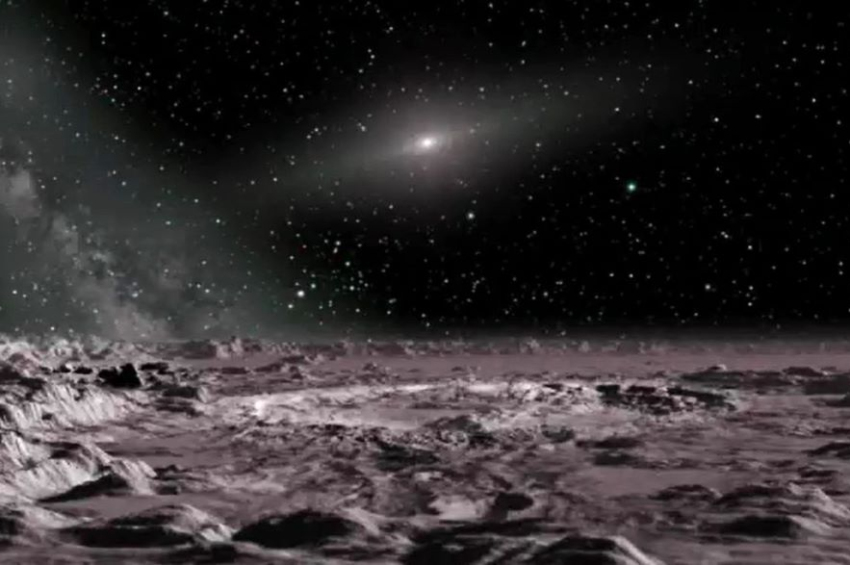Scientists propose groundbreaking mission to remote world before it slips away for millennia
A team of scientists from Italy’s University of Bari and New York’s City University and City College of Technology has proposed two cutting-edge spacecraft concepts that could reach one of the farthest objects in the solar system — Sedna — within a decade, potentially revolutionizing space travel and unlocking secrets of our solar system’s past.
Sedna is a cold, moonless, reddish dwarf planet with a mean diameter of 1,600 kilometers. Discovered in November 2003, it orbits far beyond Pluto in a region known as the outer solar system. With an extremely long and elliptical orbit, Sedna takes more than 10,000 years to complete one loop around the Sun.
At its farthest, it drifts about 84 billion miles from our star — 900 times farther than Earth. But in 2076, it will make its closest approach to the Sun in thousands of years, coming within 7 billion miles. That rare event presents a once-in-a-lifetime opportunity for a mission to visit the mysterious world, the researchers said in a new study.

Currently, with traditional rocket technology, a mission to Sedna would take between 20 and 30 years, even with gravity boosts from Venus, Earth, Jupiter, and Neptune. But the Italian researchers suggest this could be cut down to 7–10 years using experimental propulsion methods.
Their proposals are detailed in a paper published on the pre-print research portal arXiv. One idea involves a nuclear fusion-powered rocket, while the other uses an advanced version of a solar sail.
Fusion drive and solar sail
The first proposal centers around the Direct Fusion Drive (DFD), a nuclear engine being developed at Princeton University’s Plasma Physics Laboratory. The rocket would generate both thrust and electricity by fusing atoms — similar to the process that powers the Sun.
More to read:
Scientists talk about a hidden ninth planet in our Solar System - again
The DFD presents a promising alternative to conventional propulsion, offering high thrust-to-weight ratio and continuous acceleration. However, its feasibility remains subject to key engineering challenges, including plasma stability, heat dissipation, and operational longevity under deep-space radiation, the researchers note.

While the DFD is still under development, it could eventually provide enough power not only to reach Sedna but to stay there, allowing a probe to orbit the dwarf planet and conduct extended scientific studies.
The second concept involves solar sailing, a method where spacecraft are pushed by sunlight. Solar sails have already proven effective — for example, LightSail 2, launched by the Planetary Society in 2019, used solar energy to raise its orbit.
More to read:
The Milky Way contains trillions of orphan planets
The new proposal suggests adding a twist: coating the sail with a material that emits molecules when heated by the Sun, generating extra thrust through a process called thermal desorption.
While solar sailing has been extensively studied for deep-space applications, its feasibility for a Sedna mission requires assessment in terms of long-duration structural integrity, propulsion efficiency, and power availability for science operations.
More to read:
A planet-sized object travels through interstellar space 20 light-years from Earth
The solar sail design, assisted by Jupiter’s gravity, could allow a small probe to reach Sedna in as little as seven years, but it would only support a flyby, not an orbital mission.
A rare and urgent opportunity
Sedna’s unique orbit makes this a time-sensitive mission. After its 2076 flyby of the inner solar system, it will once again drift away into the deep freeze of space and won’t return for thousands of years.
Scientists believe that studying Sedna could help reveal clues about the formation of the solar system and possibly provide insight into the mysterious Oort Cloud, a theoretical boundary of icy objects that surrounds the Sun.






